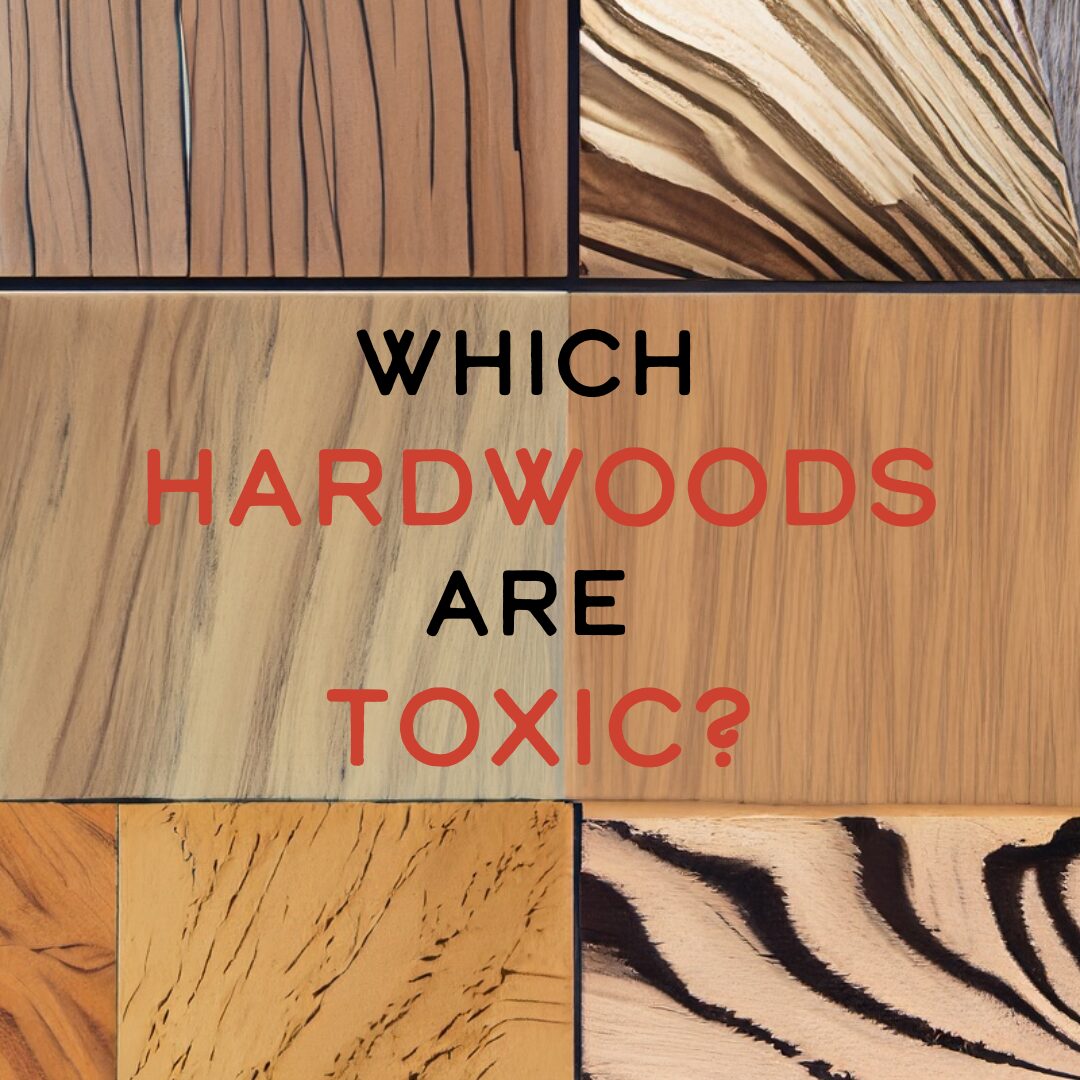When choosing wood for a project, determining whether hardwood is toxic is paramount to ensuring the safety of both the craftsman and the end user. Toxic hardwood species can pose significant health risks, ranging from respiratory issues to skin irritation. In this comprehensive guide, we’ll delve into the methods and considerations for identifying toxic hardwood species, empowering woodworkers with the knowledge they need to make informed decisions.

Understanding Toxicity in Hardwood Species
What Makes Hardwood Toxic?
Toxicity in hardwood species can arise from various factors, including natural compounds present in the wood and chemical treatments applied during processing. Tannins, phenols, and other organic substances found in certain hardwoods act as a natural defense for the tree to combat pests and decay. These natural substances may cause adverse reactions in sensitive individuals when cutting the hardwood and kicking up dust. Additionally, chemical treatments such as preservatives and finishes can introduce toxic substances into the wood, increasing its potential health risks. In this guide, we’ll stick to the naturally occurring toxins and allergens found in various wood species.
Identifying Toxic Hardwood Species
Researching Species Characteristics
One of the most effective ways to identify toxic hardwood species is through thorough research. Consult reliable sources such as botanical databases, woodworking guides, and environmental organizations to gather information on specific species. Look for details on the natural properties of the wood, including any known toxins or allergens. Here are some links to help:
Helpful Links & PDFs [Updated 5/2024]
- Links:
- PDFs
Consulting Experts and Professionals
For woodworkers seeking expert guidance, consulting with experienced professionals in the woodworking industry can be invaluable. Local lumberyards, woodworking associations, and specialized forums are excellent resources for connecting with knowledgeable individuals who can provide insights into the toxicity of various hardwood species.
Performing Sensitivity Tests
In some cases, it may be necessary to conduct sensitivity tests to determine individual reactions to specific hardwood species. This involves exposing a small area of skin to the wood and monitoring for any signs of irritation or allergic reaction. While not foolproof, sensitivity tests can help identify potential hazards before extensive woodworking projects begin.
Especially Toxic Hardwood Species

Brazilian Rosewood
Brazilian rosewood is valued for its rich, reddish-brown hues and superior tonal qualities, making it a popular choice for guitars and other musical instruments. However, it is classified as endangered due to over-harvesting, and its dust can cause allergic reactions and respiratory problems.
Cocobolo
Cocobolo is a dense, exotic hardwood known for its vibrant colors and striking grain patterns. Despite its beauty, it can release toxic dust when cut or sanded, posing risks to respiratory health.
Ebony
Ebony is renowned for its dark, lustrous appearance and is often used in high-end furniture and musical instruments. However, it contains natural oils that can cause skin irritation and respiratory issues in some individuals.
Oleander
Oleander is usually planted as an ornamental shrub rather than harvested for wood. Still, this tree can be extremely dangerous to work with.
Yew
The yew tree is extremely poisonous and is associated with numerous gloomy mythologies.
It is thought that yew trees were planted on the graves of plague victims to protect and purify the dead, and also in churchyards to stop ‘commoners’ from grazing their cattle on church ground as yew is extremely poisonous to livestock.
– Woodland Trust UK – Yew Tree (Taxus baccata)
Safety Precautions and Mitigation Strategies
Proper Ventilation and Personal Protective Equipment (PPE)
When working with potentially toxic hardwood species, it’s essential to prioritize safety precautions. Ensure adequate ventilation in the workspace to minimize exposure to airborne particles and volatile organic compounds (VOCs). Additionally, wear personal protective equipment (PPE) such as respirators, gloves, and safety glasses to protect against inhalation and skin contact.
Related Safety: Check out Timber Topia’s recommended DIY Dust Filtration System and Mobile Dust Cart
FAQs (Frequently Asked Questions)
1. Are all hardwood species toxic?
Not all hardwood species are toxic. Many are safe and commonly used in various applications without posing significant health risks. However, when cutting or sanding all types of wood, you should wear personal protective equipment (PPE) and ensure your work area is well ventilated.
2. How can I tell if a hardwood species is toxic?
Check out the links above. Research the specific species and its properties, including any known toxins or allergens. Additionally, consult with experts or professionals in the woodworking industry for guidance.
3. Can I safely use toxic hardwood species in my home?
With proper precautions and ventilation, it is possible to use toxic hardwood species in home projects. However, individuals with sensitivities or allergies should exercise caution and consider alternative options.
4. Are there eco-friendly alternatives to toxic hardwood species?
Yes, there are eco-friendly alternatives available, such as sustainably harvested hardwoods and non-toxic treatments. These options offer comparable durability and aesthetics without the health risks associated with toxic species.
5. What should I do if I experience symptoms of toxicity from hardwood exposure?
If you experience symptoms such as respiratory issues or skin irritation after working with hardwood species, seek medical attention promptly. It’s essential to address any potential health concerns and take steps to minimize future exposure.
Conclusion
In conclusion, identifying toxic hardwood species is crucial for ensuring the safety and well-being of woodworkers and end users alike. By understanding the factors that contribute to toxicity, conducting thorough research, and implementing appropriate safety measures, woodworkers can confidently navigate the world of woodworking while minimizing health risks.